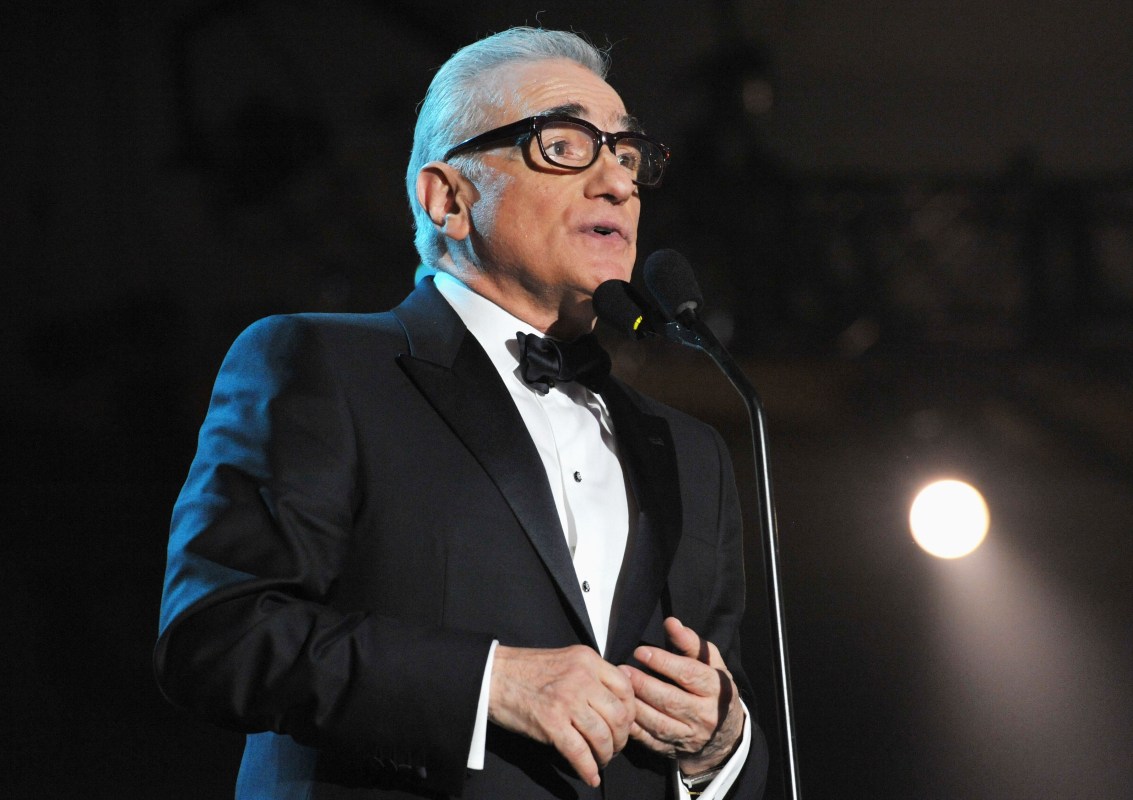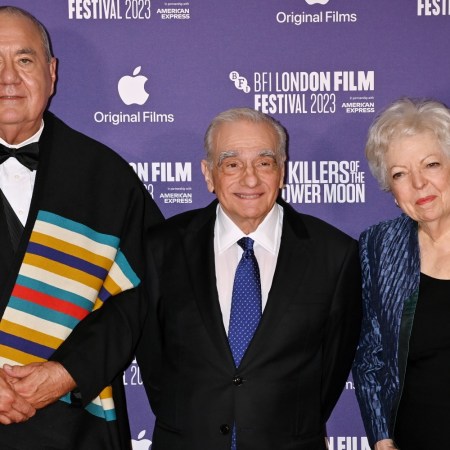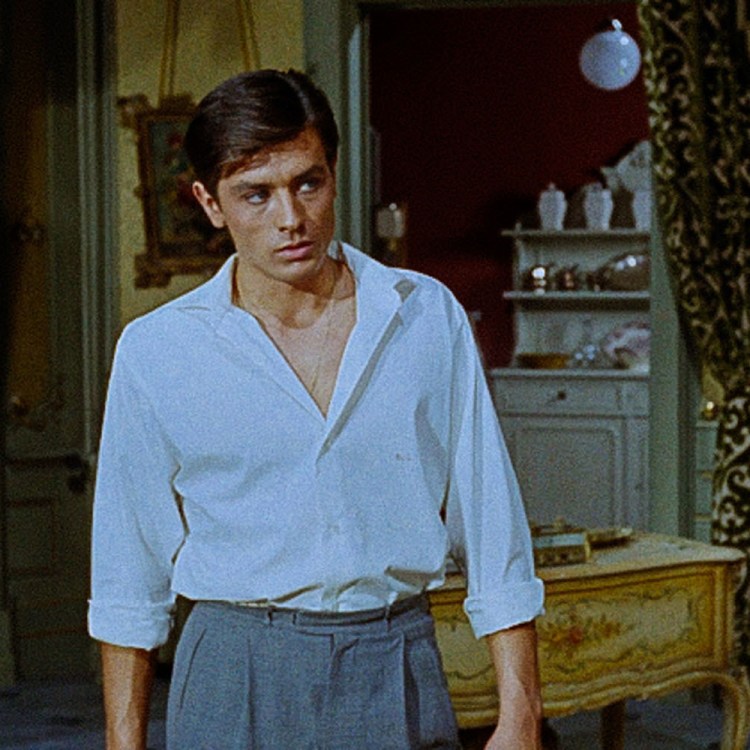Martin “Marty” Scorsese is old-school — and that’s a breath of fresh air. No flip-flops and cargo shorts for this A-list director, no stubble: he appears onstage this week at the Directors Guild of America auditorium for an event for The Film Foundation, an organization he founded and chairs, in a tailored dark suit (Italian? Charcoal or black?), a somber tie and a white shirt simply striped — a mature man at 75.
The cadence of his New York accent, his sheer presence is a relief, a sign that there are passionate artists who rose from immigrant families (his came to America from Sicily in 1910) and succeeded in America through their sheer passion and ability. He has a small body and one of those big Einstein heads, with heavy salt-and-pepper eyebrows and deep baggage beneath his eyes. He listens intently, wanes into a stillness that may be weariness, and then returns when touched by an idea, with a white-toothed smile that isn’t selling toothpaste.
He is onstage flanked by scholars and librarians and educators and union leaders, to unveil a new curriculum for junior and senior high school students. The title of the eight-module program is “The Story of Movies: Portraits of American: Democracy on Film.” The underlying concept is that not only is reading text fundamental but reading visual images is, too. In the weeks following the Parkland Shooting and the uprising of students taking the microphone and creating a flurry of their own potent images of democracy in action it seems particularly timely to address how teachers can up their game in teaching media literacy by focusing on the subject of democracy.
Scorsese’s work with the Fund, he explains, “started back in 1990 when I realized that cinema, films, the actual material itself, the celluloid itself was in danger of disappearing forever.” Not to be alarmist, but negatives were simply disappearing: 90 percent of silent films and 50 percent of films made before 1950 had vanished with hardly a trace.
Not only did this make the director who had dedicated his life to the form “angry,” but he also committed to raising the consciousness by found The Film Foundation 18 years ago. And, now, nearly two decades later, this mission seems more urgent than ever. To quote Scorsese: “Today images are everywhere and we all need to make sense of them.”
When Scorsese was growing up in Lower Manhattan, there wasn’t the kind of media saturation that now exists. For contemporary youths born into a world where they get bombarded with images that flicker between “art and commerce, cinema and ‘content’” that challenge becomes teaching them how to tell which is which. When are they being sold — and when are they receiving information. And, the motor of the project, how do they dive deeper?
“We already teach our students to be critical thinkers — now they have to be critical viewers,” he explains. In his opinion, when it comes to literacy, there’s no difference between verbal and visual. He notes that cinema has been a part of the American experience for over a century. And that understanding them opens a window on the time they were made and also captures history in the making: “evolution and shifts in culture.”
While there’s no need to forget about Scorsese as the auteur of Mean Streets, Goodfellas, The Age of Innocence and Raging Bull (insert your favorite here), to hear him discuss movies reveals how much of a teacher he is, too. Referring to the curriculum and the body of works that span American history, he sees that experience of democracy in action as including the “hypocrisies, false promises as well as the great hopes and ideals of America.”
He notes some resonant films that are included in the curriculum, such as John Ford’s 1940 epic The Grapes of Wrath based on the John Steinbeck classic starring Henry Fonda. It’s a beautiful film that addresses the “exploitation of labor.” Another is Billy Wilder’s 1951 Ace in the Hole, overlooked upon its release but now considered a classic. It addresses the (often warped) role of the free press and demonstrates with “brutal clarity that human tragedy could be milked relentlessly by the media.”
With Elia Kazan’s 1963 epic America, America lensed by the late Oscar-winning cinematographer Haskell Wexler, Scorsese sees an “extremely personal handmade” vision of our nation of immigrants and “the great American promise that includes Kazan’s family and my own.”
Recalling growing up in a working-class family with “no books on the wall,” he learned from the movies — and not always in ideal conditions. He recounts how even then he was able to see Citizen Kane on the Million Dollar Movies on Channel 9—with the march of time sequence cut out. So when asked about the changing nature of how people are consuming their images, Scorsese puts it in the context that however you see images they need to be digested. Sure there’s an ideal cinema seen in its proper context – but for most of us, that’s not how we began. He also acknowledges the advantages of the current climate – “We’ve gained: we have the access. While it’s a problem of [maintaining] concentration, it is a complete revolution.”
Whether viewing an image on a wristband, a phone, a TV screen at the airport or in a luxury cinema with a bar and cushy seats, the experience shares something that goes all the way back to cave painting: “The work itself has to speak to us and that is the key. It’s always about telling a story — even if it’s humming.”
And, clearly, for Scorsese this isn’t a one-way street: handing knowledge in stone tablets to teenagers from on high. He notes: “The best part of teaching is learning from the kids.”
This article was featured in the InsideHook newsletter. Sign up now.
























